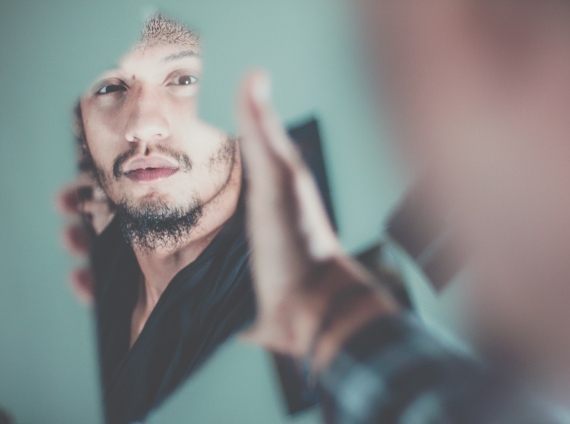In recent months and in different ways, various media have warned, with more or less certainty and alarm, about some of the disorders caused in many young women by the compulsive use of social networks such as Instagram, among others, in all matters relating to the image of their bodies in relation to those that are offered in a positive and desirable way in these virtual spaces. The way in which they have been presented could lead to the conclusion that the phenomenon is more specific than widespread and deep-rooted. It is our opinion, however, that we are facing a worrying, broad, requiring an informed debate and for which social intervention is necessary, including regulatory legislation, such as that adopted by Norway with a new Law (July 1, 2021), which makes it mandatory for influencers’ photo touch-ups to be labeled, in an attempt to respond to this other new challenge facing us in our contemporary societies.

According to Dr. Katherine Phillips of Cornell University, based on the findings of the scientific literature and our own research to date, Mirror Syndrome (also known as Body Dysmorphia Syndrome) is a mental disorder related to body image that is more widespread than it might seem. It is a serious health problem, which has not yet received the institutional, social and media attention it deserves, but for which the data indicate a notable increase among young women: of the total number of people diagnosed, 60% are women from the age of 12 or 13 and two thirds of women who experience this syndrome suffer disorders before the age of 18 (data from the International OCD Foundation).
The diagnosis and definition of Mirror Syndrome is not easy and affects people of any socioeconomic stratum, ethnicity or geographical origin. It is usually related to eating disorders. However, the root of this problem, which sometimes leads to eating disorders or even suicide, lies, according to our research, in an even deeper place, located in the very perception and consequent cultural narrative that these people construct around any part of their body. Once the subject configures a narrative principle by which they assimilate and project that their body is in a state of crisis (misalignment, dissonance or imbalance with respect to other body models sanctioned as positive) a whole set of psychosocial problems is triggered, including low self-esteem, depression, anxiety, social isolation, and alcohol and illicit substance abuse to be able to cope with the hard-to-bear pressure and emotional burden, leading, in some cases, to suicidal behaviors. According to the latest data offered by a study published in the Journal of Psychopathology in 2019, 21.5% of those with Mirror Syndrome have made suicide attempts and 74.5% have thought about attempting suicide.

The beauty influencer business is strategically related to the promotion of certain beauty standards, practices and behaviors not only imposed by those who produce them, but also reaffirmed and reconfigured by those who assume and consume them. This is the case, for example, with the excessive use of body editing filters posted on social networks, mainly Instagram, which, in turn, generate new types of body and beauty standards that are increasingly distant from the real anatomical and aesthetic diversity of people.
This phenomenon develops into a feedback cycle that is very difficult to break, due to the fact that a cultural narrative is added to the commercial interest, constructed from the body identification narrative with a permanent state of crisis, where the dissonance with the model activates primary psycho-emotional responses of anguish, panic, hatred and frustration. All this contributes, perhaps even more, to the difficulty of an already complex diagnosis. People suffering from Mirror Syndrome are often unaware that they suffer from such a disorder, nor in which area of its broad spectrum they find themselves. Their social environment is also unable to recognize the early warning signs soon enough, which are very often mistaken for normalized aspects of beauty rituals, the use of social networks, or even identified with fashion trends.
Consequently, given the extraordinarily complex nature of this public health problem, an approach must be adopted that synergistically includes all the perspectives involved in the development of this disorder, the causes of which are still unclear but in which various biological, social, genetic and experiential factors are undoubtedly involved.

Among other actions, some of the principles and objectives of the Norwegian law could be taken as a reference point to address this issue, such as the obligation to mark retouched or distorted advertising and to warn about the use of filters. However, although the Norwegian law offers us a valuable precedent, our research practice has shown that restrictive or punitive action is not sufficient to deal satisfactorily with this phenomenon. In this sense, we believe that any government that takes this growing public health problem seriously should at the very least undertake a coordinated action in which users are educated in the management of social networks and the beauty filters available on them so that they become aware not only of the serious harm that these practices have on their own psychosocial development and health, but also understand the co-responsibility that all citizens have in the amplification, reproduction and activation of the cultural narrative of bodies in crisis as something normalized and positive.
Pablo Valdivia
Professor of Culture and Literature at the University of Groningen, Director of the National Research School for Literary Studies in the Netherlands
and Research Fellow at Harvard University
Rosmery-Ann Boegeholz
Researcher at the University of Groningen and the National Research School for Literary Studies in the Netherlands.
ANID Fellow: Deputy Directorate of Human Resources, National Doctorate 2021-21210084, Chile
Comments on this publication